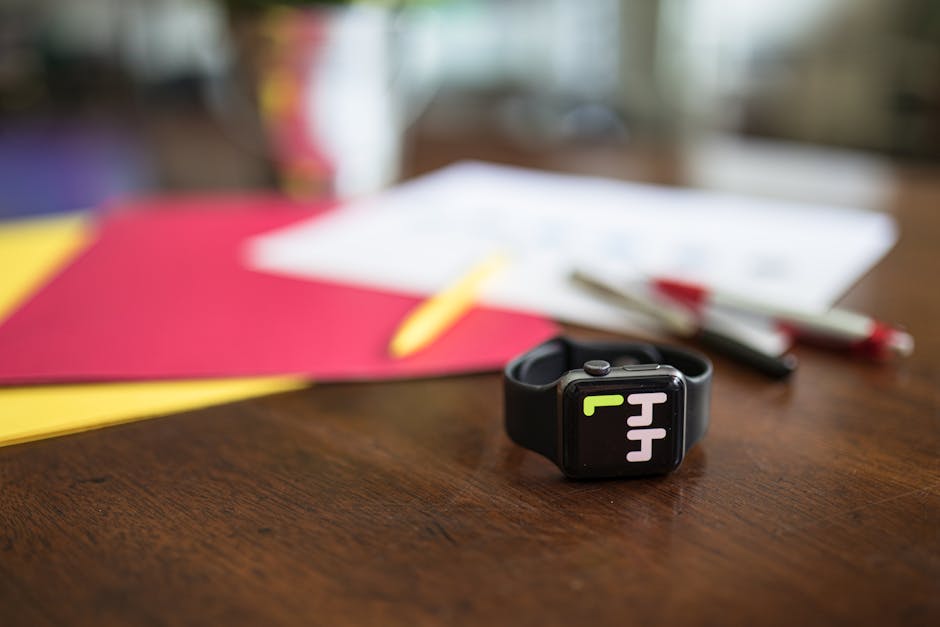Table of Contents
You know, sometimes I sit here and just kinda think about how much digital advertising has changed, even in the last few years. It’s pretty wild, right? Back in the day, figuring out if an ad actually, like, showed up where it was supposed to and if a real person even saw it felt a bit like throwing spaghetti at a wall and hoping some stuck. But now, in 2025, we’re talking about things that actually measure that stuff, and Moat display ads are a huge part of that whole story.
For anyone who’s been dabbling in the online ad world for a bit, Moat isn’t exactly a brand-new idea. It’s been around, doing its thing, and over time, it’s just become this pretty standard tool for advertisers. If you’re putting money into display ads – you know, those banner ads and stuff you see all over the internet – you gotta know if they’re doing their job. And Moat, well, it’s one of the big players helping advertisers figure that out. It’s kinda like having a super-smart detective for your ad spending.
Why Moat Even Matters, Seriously
Think about it this way: you’ve got a budget, probably a pretty hefty one, for your digital ads. You want to make sure your ads aren’t showing up next to some really weird or bad content, and you for sure want to know if people are actually seeing them. Plus, there’s all this crazy ad fraud out there, where bots pretend to be real people clicking on stuff, wasting everyone’s money. It’s a messy situation, and that’s where Moat steps in.
It helps with a few big things. First up, there’s viewability. This is basically about whether an ad actually had a chance to be seen by a human. It’s not enough for an ad to just load on a page; it needs to be in view for a certain amount of time. Like, if an ad loads way at the bottom of a page and no one ever scrolls down to see it, then what’s the point? Moat helps measure if that ad was really on screen. For display ads, the general rule is usually 50% of the ad in view for at least one second. Simple enough, but a pain to track without help.
Then there’s brand safety. This one’s a no-brainer. Imagine your company selling organic, kid-friendly snacks, and your ad suddenly pops up next to some really adult, controversial, or just plain offensive article. That’s a nightmare. Moat helps by flagging content that might be bad for your brand’s image, so you can avoid those spots. It’s like having a bouncer at the digital door, keeping out the riff-raff.
And finally, the biggie, ad fraud. This is where bad actors try to trick advertisers into paying for fake impressions or clicks. It’s a huge problem, costing businesses tons of cash every year. Moat tries to filter out these phony interactions, making sure your ad budget is actually going towards reaching real humans, not some bot farm in who-knows-where.
So, when we talk about Moat display ads in 2025, it’s not just about some fancy tech; it’s about making sure your advertising money is spent well. It gives you a much clearer picture of what’s happening, which, honestly, is what any business needs to make good decisions.
How Moat Plays in the 2025 Ad World
Okay, so we’re not talking about some fringe tool here. Moat is pretty much baked into the cake for big advertisers and publishers. In 2025, the digital ad world is even more complex than it was a few years back. We’ve got more channels, more ways people consume content, and honestly, more ways for things to go wrong.
What’s interesting is how Moat has kinda kept up with all this. It’s not just about a simple banner on a website anymore. Think about video ads, interactive ads, ads within apps, and all that programmatic buying where ads are bought and sold by machines in milliseconds. Moat has to work across all these different formats and platforms. That’s a tough gig, but it’s what makes it so useful.
I mean, if you’re an advertiser, you’re not just buying a single ad spot. You’re running campaigns across dozens, maybe hundreds, of different websites and apps, through various ad networks. Trying to manually check if every single one of those ads was seen by a person in a safe environment? Impossible. So, you need a system like Moat to do the heavy lifting for you. It’s all about getting reports, seeing the numbers, and feeling a bit more confident that your campaign isn’t just throwing money into a digital black hole.
And let’s be real, with privacy changes, like the slow death of third-party cookies, and all the talk about new identity solutions, advertisers are looking for any edge they can get. Measuring viewability and fighting fraud becomes even more important when tracking users across sites gets tougher. Moat provides a kind of fundamental measurement that isn’t reliant on tracking individual users, but rather on the ad itself and its context. That feels pretty solid, doesn’t it? It’s not about who saw it necessarily, but if it could have been seen, which is a different, still super useful thing.
The Nitty-Gritty for Advertisers and Publishers
So, if you’re running a business, big or small, and you’re using display ads, what does using Moat actually look like? Well, for advertisers, it generally means that when you set up your campaigns, you can often pick to have them measured by Moat. You might integrate it through your demand-side platform (DSP) or your agency. Then, after your campaign runs, you get these reports. These reports show you the viewability rates, the invalid traffic (IVT), and give you data on brand safety.
For instance, you might see that 80% of your display ads were viewable, which sounds good. But maybe 10% of your ad spend was marked as invalid traffic – bots, basically. That’s money you can try to get back or at least use to adjust your strategy for next time. It helps you have conversations with your ad partners, you know, to say, “Hey, these placements aren’t giving me good viewability,” or “Why am I seeing so much bot traffic here?” It creates accountability, which is pretty important when we’re talking about real money.
And for publishers – the websites and apps that display the ads – Moat is also a big deal. If a publisher can show that their ad inventory has really high viewability and low fraud, they can actually charge more for their ad space. It builds trust. If they can prove that your ad is actually being seen by real people, why wouldn’t you want to advertise with them? It’s kind of like a quality stamp for their ad inventory. So, they often use Moat to audit their own traffic and show off their good numbers. It’s a win-win when it works.
I believe in this kind of transparency. When advertisers know their money isn’t just vanishing into thin air and publishers can prove the value of their space, everyone benefits. It makes the whole ad ecosystem a bit less like the wild west and more like, well, a functioning market. Which, honestly, is better for everyone.
Looking Ahead: What’s Next for Moat and Display in 2025 and Beyond?
It’s clear Moat isn’t just going to fade away. As the ad tech landscape gets even more complicated, tools like Moat become more essential, not less. With new ad formats popping up all the time, and the constant battle against increasingly sophisticated ad fraud, Moat has its work cut out for it.
What’s interesting is thinking about how it might adapt. Will it get even better at spotting video fraud? Will it somehow start incorporating data from newer platforms, like maybe some of the metaverse stuff, if that becomes a real ad frontier? My guess is it’ll keep refining its algorithms. Fraudsters are always trying to find new ways to cheat the system, so the tools that fight them have to keep learning and getting smarter too. It’s a constant arms race, you could say.
Also, as companies try to streamline their operations, having a reliable, third-party measurement tool becomes even more valuable. It’s not just about protecting your brand or stopping fraud; it’s about having consistent, trusted data that you can use across all your campaigns and platforms. That kind of consistent insight is priceless, especially when you’re trying to figure out what’s working and what isn’t.
And, maybe, just maybe, as we move further into a world with less direct personal tracking, the focus on things like viewability and brand safety – which are more about the ad and its context than the individual user – will become even more central to how we think about ad effectiveness. That’s my personal take on it, anyway. It makes sense, right? If you can’t perfectly track everyone, you can at least make sure your ad isn’t wasted.
So yeah, Moat display ads. Not the flashiest part of ad tech, perhaps, but definitely one of the most practical and necessary, especially in 2025. It’s kinda like the plumbing of digital advertising – you don’t think about it much until it stops working, and then you realize how utterly important it is. For anyone serious about their online ad spending, keeping an eye on these kinds of metrics is just part of doing business these days. It’s how you get your money’s worth.
FAQs About Moat Display Ads
What exactly does “viewability” mean for display ads?
Viewability for display ads basically means that at least 50% of your ad’s pixels were on a user’s screen for at least one continuous second. If it’s a video ad, the standard is usually 50% of the pixels in view for at least two continuous seconds. It’s supposed to give you a basic idea of whether your ad actually had a chance to be seen by a human.
Can Moat really stop all ad fraud?
That’s a tough one, honestly. Moat, like other ad verification tools, is really good at detecting a lot of different types of invalid traffic (IVT), including sophisticated bot activity. But it’s an ongoing battle. Fraudsters are always cooking up new ways to trick the system, so these tools are constantly adapting. It significantly reduces fraud, but saying it stops all of it would be a stretch for any solution out there. It’s a defense, not a magic bullet.
How does Moat help with brand safety?
Moat helps with brand safety by analyzing the content on web pages where your ads might appear. It uses algorithms to identify pages with sensitive, offensive, or inappropriate content based on categories you set or industry standards. If a page is flagged, your ad won’t be served there, or if it was, Moat will report on it, helping you avoid associating your brand with undesirable content. It’s like a content filter for your ads.
Do I have to pay extra to use Moat for my ad campaigns?
Usually, yes, there’s a cost associated with using Moat or any ad verification service. Sometimes it’s integrated into the platform you’re buying ads through, and the cost might be bundled, or it could be an additional fee based on impressions measured. Big advertisers usually just build it into their budget because the money saved from fraud or unviewable impressions often makes it worth it. It’s an investment to ensure your ad spend is effective.
Is Moat the only tool out there for ad verification?
Nah, not at all. While Moat (now part of Oracle Advertising) is a major player and pretty well-known, there are other companies that offer similar services. Think of names like DoubleVerify, Integral Ad Science (IAS), and others. They all do similar things – measure viewability, fight fraud, and help with brand safety – but they might have different strengths or specific features. Moat is just one of the big dogs in the yard.












